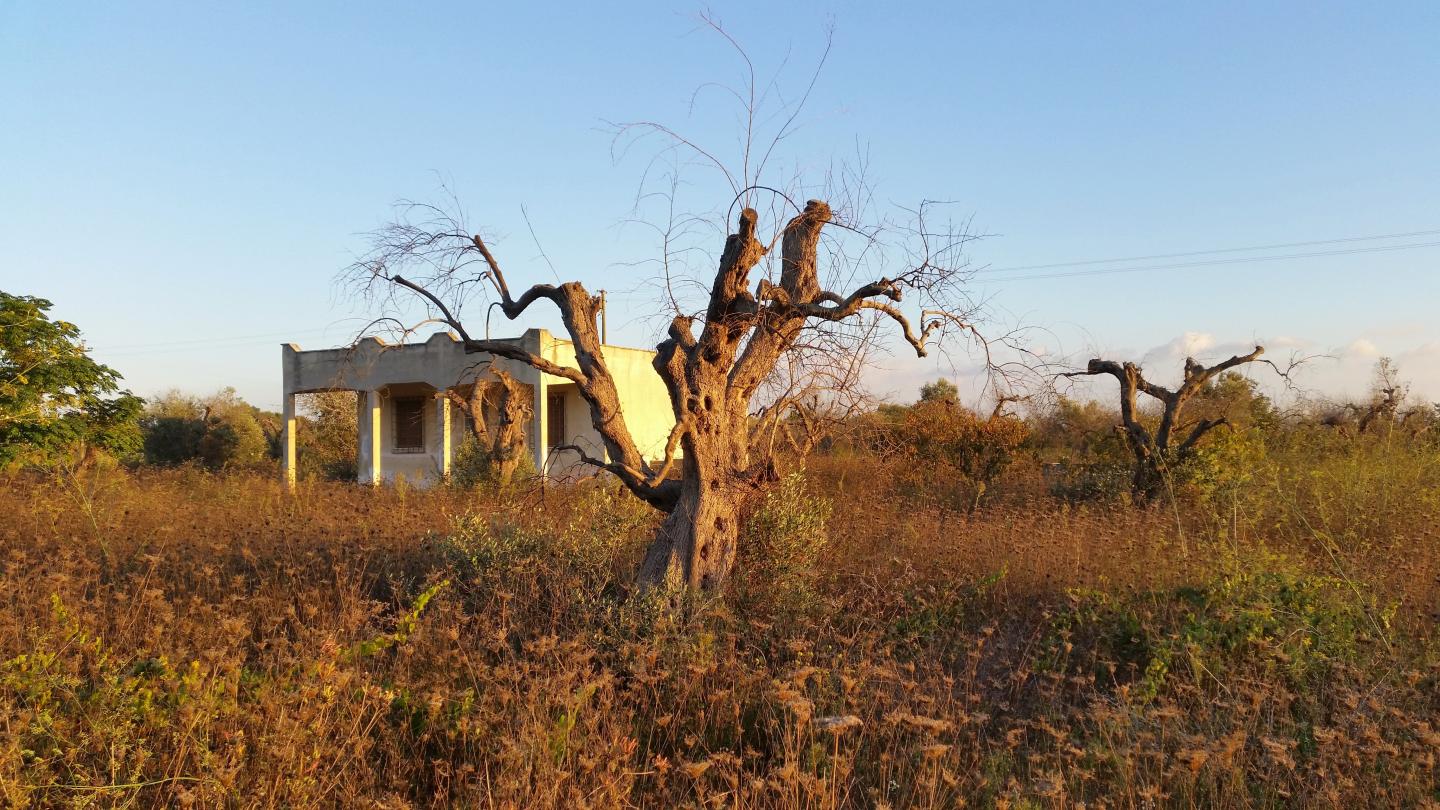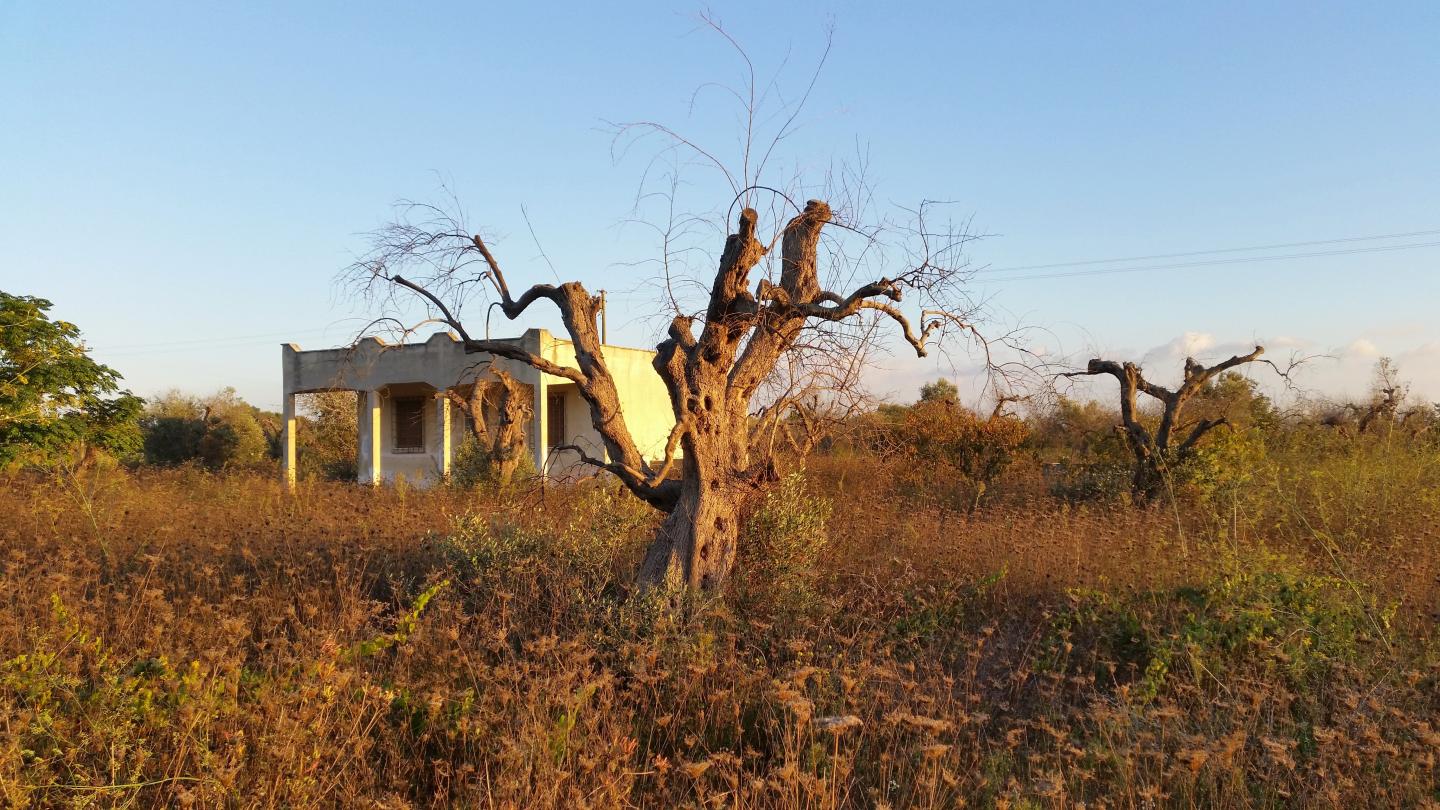
Credit: Dr Steven White, CEH.
Expert ecologists at the UK-based Centre for Ecology & Hydrology (CEH) have devised a scientific model which could help predict the spread of the deadly Xylella fastidiosa which is threatening to destroy Europe's olive trees.
The CEH scientists have created a model which is able to qualitatively and quantitatively predict how the deadly bacterial pathogen may spread as well as offer guidance on how buffer zones should be arranged to protect uninfected olive trees.
The research, published in the journal Biological Invasions, highlights how Xylella fastidiosa is influenced by a range of insects – including spittlebugs – and the rate to which these vectors contribute to the potential spread of the disease across Europe and beyond.
Xylella fastidiosa was once restricted to the Americas but was discovered near Lecce, Italy, in 2013. Since the initial outbreak it has invaded over 23,000 ha of olives in the Apulian Region of southern Italy, and is of great concern throughout the olive production areas of the Mediterranean basin.
The study modelled control zones currently employed in Apulia, Italy, and found that increasing buffer widths decreased infection risk beyond the control zone but may not stop the spread completely.
This was due to the ability of the disease-spreading insects to transport themselves between sites.
Lead author Dr Steven White, a Theoretical Ecologist at the Centre for Ecology & Hydrology, said the model indicates the importance of control strategies reducing the risk of the disease-spreading insects infecting healthy trees through the use of wider buffer zones.
Dr White said, "At these early stages of Xylella fastidiosa invasion, little is known about the rates of spread of this terrible disease of olive trees and how best to control it. This is largely due to biological and environmental differences between where the strain is invading and where it has originated.
"Based on current surveillance work in Apulia, Italy, we have constructed a simple mechanistic model which attempts to replicate the pattern of disease spread. Then, building upon this model, we investigated the efficacy of the buffer zone control programme.
"In doing so, this work provides policy makers with scientific information about how the disease might progress and how the control strategies imposed by the European Union may reduce the risk of spread to the rest of Italy and beyond."
Co-author, Dr Daniel Chapman, a Plant Community Ecologist at the Centre for Ecology & Hydrology, said, "The emergence of novel invasive plant diseases such as Xylella fastidiosa in olives is an increasing threat. Our study shows that simple models can help to plan disease management strategies in the early stages of an epidemic.
"Thanks to new funding from the European Union, we will be further developing the approach to provide specific guidance on surveillance, containment and even eradication of new outbreaks."
###
The research, funded by the European Food Safety Authority (EFSA) and the Natural Environment Research Council (NERC), also recommends that while many aspects of the Xylella fastidiosa invasion remain uncertain and hinder forecasting, future studies should investigate quantification of the infection growth rate as well as short and long term distance dispersal.
Notes to editors
Contact details
For interview requests and images contact Wayne Coles, Media Relations Officer, Centre for Ecology & Hydrology, UK, Mobile: +44 (0)7920 2955384, Email: [email protected]
Lead author, Dr Steven White, Theoretical Ecologist, Centre for Ecology & Hydrology, UK, Office: +44 (0)1491 692699, Email: [email protected]
Co-author, Dr Daniel Chapman, Plant Community Ecologist, Centre for Ecology & Hydrology, UK, Office: +44 (0)131 4458549
Paper reference
Steven M. White, James M. Bullock, Danny A.P. Hooftman, Daniel S. Chapman, 2017, 'Modelling the spread and control of Xylella fastidiosa in the early stages of invasions in Apulia, Italy,' Biological Invasions, published online 21 February 2017. Doi: 10.1007/s10530-017-1393-5
The paper is available as an open access document via this URL: http://link.springer.com/article/10.1007/s10530-017-1393-5
Photograph
A photograph of an olive tree infected with Xylella fastidiosa in Apulia, Italy, is available via the CEH Dropbox: https://www.dropbox.com/s/dffyx70yv6jzt4u/Xylella%20fastidiosa%20in%20olive%20tree.jpg?dl=0
The Centre for Ecology & Hydrology (CEH) is the UK's Centre of Excellence for integrated research in the land and freshwater ecosystems and their interaction with the atmosphere. CEH is part of the Natural Environment Research Council, employs more than 450 people at four major sites in England, Scotland and Wales, hosts over 150 PhD students, and has an overall budget of about £35m. CEH tackles complex environmental challenges to deliver practicable solutions so that future generations can benefit from a rich and healthy environment. You can follow the latest developments in CEH research via @CEHScienceNews on Twitter
Media Contact
Wayne Coles
[email protected]
44-014-916-92650
@CEHScienceNews
http://www.ceh.ac.uk
############
Story Source: Materials provided by Scienmag





